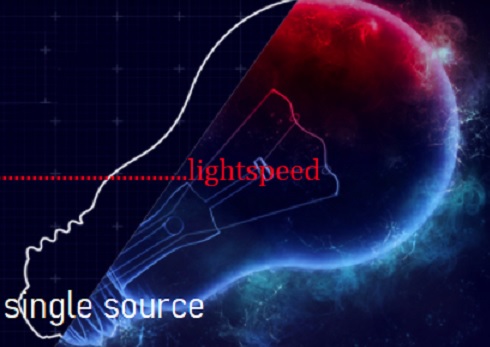Latest News
 The #1 independent SOAR platform
The #1 independent SOAR platform The FIRST and ONLY ISMS as a Product "out of the box", SIEM - IAM - PAM - ISMS - SOC/CDC
The FIRST and ONLY ISMS as a Product "out of the box", SIEM - IAM - PAM - ISMS - SOC/CDC 2020 Gartner selected No 1
2020 Gartner selected No 1 Cloud native for organisations of all sizes
Cloud native for organisations of all sizes The first 100% REMOTE SOC
The first 100% REMOTE SOC SOC-CDC Enterprise Solution
SOC-CDC Enterprise Solution NEW- interfaces with CyberArk IAM-PAM-Vault Access Security
NEW- interfaces with CyberArk IAM-PAM-Vault Access Security The most cost efficient solution starts at EUR 2,500.-/month
The most cost efficient solution starts at EUR 2,500.-/month
ISMS - SOC/SOAR - The complete solution
Project management is the application of knowledge, skills, tools, and techniques applied to project activities in order to meet the project requirements.
Project management is a process that includes planning, putting the project plan into action, and measuring progress and performance.
In the complex world of IT Security, Project Managers must be skilled Engineers, Architects and work hands-on, to lead the team to success. Without deep technical knowledge, a project very often fails.
Project management - discipline of planning, organizing, securing, managing, leading, and controlling resources to achieve specific goals. A project is a temporary endeavor with a defined beginning and end (usually time-constrained, and often constrained by funding or deliverables), undertaken to meet unique goals and objectives, typically to bring about beneficial change or added value. The temporary nature of projects stands in contrast with ongoing business operations
The ONLY CDC Solution Globally ALL in ONE - Project Management - Planning - Architecture - Integration by Securescrypt's Technical Director - Dipl. Ing. Bernhard Bowitz
IT Project Management
IT project management is the process of planning, organizing and delineating responsibility for the completion of an organizations' specific information technology (IT) goals.
IT project management includes overseeing projects for software development, hardware installations, network upgrades, cloud computing and virtualization rollouts, business analytics and data management projects and implementing IT services.
In addition to the normal problems that can cause a project to fail, factors that can negatively affect the success of an IT project include advances in technology during the project's execution, infrastructure changes that impact security and data management and unknown dependent relationships among hardware, software, network infrastructure and data. IT projects may also succumb to the first-time, first-use penalty which represents the total risk an organization assumes when implementing a new technology for the first time. Because the technology hasn't been implemented or used before in the organization, there are likely to be complications that will affect the project's likelihood of success.
Managing the Project
These five process groups comprise the project management life cycle and are universal to all projects. The specific phases within a project, however, are unique to each project and represent the project life cycle.
Initiation: the project goal, need or problem is identified. The project manager is assigned to the project and the project charter is created.
Planning : the project manager and the project team work together to plan all of the needed steps to reach a successful project conclusion. The project planning processes are iterative in nature and it's expected that planning will happen often throughout the project.
Execution : once the project plan has been created, the project team goes about executing the project plan to create the deliverables of the project. The project can shift to project planning as needed throughout project execution.
Monitoring and controlling : as the project is being executed by the project team, the project manager monitors and controls the work for time, cost, scope, quality, risk, and other factors of the project. Monitoring and controlling is also an ongoing process to ensure that the project addresses its targets for each project objective.
Closing : at the end of each phase and at the end of the entire project, project closure happens to ensure that all of the work has been completed, is approved, and ultimately transferred ownership from the project team to operations.
Managing the Project Knowledge Areas
There are ten project management knowledge areas. These ten knowledge areas segment different actions completed by the project manager throughout the project. The ten project management knowledge areas are:
Project scope management: the project scope is defined, documented, and approved. The project scope is protected from unauthorized changes, edited with approved changes, and validated by the project stakeholders for project acceptance.
Project schedule management: the project schedule is defined first by the working hours of the project, any project milestones, and ultimately a project deadline. The project team's availability throughout the project is documented and planned accordingly. The project manager will work with the project team to identify the project tasks and task duration estimates in order to create a project timeline.
Project costs management: the costs of the project are estimated so that a budget for the project can be assigned. Project costs include materials, services, facilities, software licenses, and other expenses attributed directly to the project.
Project quality management: what constitutes quality in the project is defined in specific metrics and agreed upon among the stakeholders as early in the project as possible. Quality assurance programs and policies direct the project work, while quality control inspects the project work to confirm that quality has been ascertained in the work.
Project human resources management: the project manager works with the project team to verify that each team member is completing their assignments, working well with others, and that their participation and performance is reported to their respective managers.
Project communications management: stakeholders will need information from the project manager will need to provide information to the project manager throughout the project life cycle. This knowledge area create a communications management plan that address who will need what information, when the information is needed, and the best modality for the communications.
Project risk management: risks are situations, events, conditions that can threaten, and sometimes benefit, the objectives of the IT project. Risks must be identified, analyzed, and a response created for the risk event. The probability and impact of each risk event is evaluated to create a risk score to justify the costs needed to manage the risk event.
Project procurement management: should the project need to purchase goods or services, a formal process for procurement will need to be created. The plan should address the project's selection of contract type, administration of the contract, purchasing audits, and contract closeout. Many project managers do not manage procurement, but defer to the organization's centralized procurement or purchasing department and processes.
Project stakeholder management: stakeholders are anyone that has a vested interest in the project. Stakeholder management is the identification, inclusion, and communication with the groups of project stakeholders. It manages the anxieties and concerns the stakeholders may have about the project work.
Project integration management: this special knowledge area is the coordination of the events in all of the other knowledge areas. How well the project manager performs in one knowledge directly affects the performance of the other knowledge areas. Project integration management examines the interactions and contingencies among the knowledge areas to ensure that the project is adequately planned, executed, controlled and closed.
These ten knowledge areas are to be managed iteratively throughout the project. With the exception of procurement, a project manager will likely encounter all ten of these knowledge areas in every project. There is no set order in which the areas should be managed, but rather the project manager shifts to the appropriate knowledge and processes based on what's occurring within the project. IT Project Life Cycle
There are several different approaches to managing an IT project that affect the project life cycle. Organizations can select one of these popular approaches to help reduce the risk of expensive rework, risks from quickly changing technology, or expansive planning at the launch of the project. The project life cycle of a typical IT project moves through iterations of planning, executing, and controlling until the project is ultimately closed and transferred into operations. However, there are three distinct IT project management life cycles:
Predictive life cycle: this is the most common and traditional project life cycle for IT projects. In this approach the project manager and the project team first define the project scope, project schedule, and expected project costs before the project execution begins. As part of the project planning it's typical for the phases of the project to be defined (each phase does a specific type of project work). In order for the project to move from its initiation to its closure each phase must be started and completed in the specific order as planned. This type of approach is sometimes called a waterfall approach as the project "waterfalls" down the phases of the project.
Iterative life cycle: this approach to IT project management requires that the project management be defined early in the project, but the cost estimates and activity duration estimating are planned at a higher level early in the project. As the project execution occurs costs and duration estimates are created for the most imminent work through iterations of planning. The iterative life cycle also plans for iterations of benefits released to the organization. For example, an iterative life cycle may create a new software with more features with each new release as part of the project.
Adaptive life cycle: this project life cycle also uses an iteration of planning and executing, but the planning that typically last for two weeks. This approach uses a rolling wave of planning and executing through short bursts of both planning and executing. Change is expected in this approach to the IT project and it's ideal for software development project. Agile project management and Scrum are examples of the adaptive life cycle.
All of these life cycles use the concept of phases to move the project work forward. A phase describes the type of work that will take place in that portion of the project. The project manager, the organizational requirements, and even customer requirements can influence what type of project life cycle the project manager will adapt in the project.
Agile project management helps overcome IT obstacles - Traditional project management can ruin the best-intentioned IT efforts. It's time to get flexible and interact with stakeholders using Agile methods
Agile project management approaches for on-time and on-budget delivery - Pick an agile project management path based on scope, schedule or budget to set project boundaries and keep release dates on track.
Software project management conceptsProject Management Standards, Concepts, Positions
Software engineering - is the application of a systematic, disciplined, quantifiable approach to the development, operation, and maintenance of software Software development
Agile software development - is a set of principles about how software should be developed based on a rapidly iterative agile way of working in contrast to many previous software development methodologies. Capability Maturity Model (CMM)
in software engineering is a model of the maturity of the capability of certain business processes. A maturity model can be described as a structured collection of elements that describe certain aspects of maturity in an organization, and aids in the definition and understanding of an organization's processes. Dynamic Systems Development Method (DSDM)
is a software development methodology originally based upon the Rapid Application Development methodology. DSDM is an iterative and incremental approach that emphasizes continuous user involvement.
Unified Process
The Unified process is a popular iterative and incremental software development process framework. The best-known and extensively documented refinement of the Unified Process is the Rational Unified Process (RUP).
Project management approaches and tools
Agile project management
Cadence project management methodology; other than a standard - the methodology is flexible and adaptable to the size, risk, and complexity of projects; recommends when and how to use which tools; is adaptable to company, institution, or sector.
Critical chain project management (CCPM)- method of planning and managing projects that puts more emphasis on the resources required to execute project tasks.
Event chain methodology - is an uncertainty modeling and schedule network analysis technique that is focused on identifying and managing events and event chains that affect project schedules.
Extreme project management (XPM) - refers to a method of managing very complex and very uncertain projects.
Lean project management - Lean concepts in a project management context.
PMI (Project Management Institute) - project management standards and certification.[6]
IPMA (International Project Management Association) - project management standards, guidelines and certification.
PRINCE2 - project management methodology and certification. The planning, monitoring and control of all aspects of the project and the motivation of all those involved in it to achieve the project objectives on time and to the specified cost, quality and performance.[7]
Process-based management
MS-Project
JIRA
Project management standards
ISO 10006 : guideline for quality management in projects, is an international standard developed by the International Organization for Standardization.
PMBoK; Project Management Body of Knowledge, is the international standard for project management developed by the Project Management Institute PMI.
APMBoK; Association for Project Management Body of Knowledge, developed by the APM (affiliated with the IPMA).
Project participants
Executive sponsor : the senior member of the project board and often the chair.
Project Management Professional - is a certificated professional in project management.
Certified Project Management Professional
Project manager : professional in the field of project management. Project managers can have the responsibility of the planning, execution, and closing of any project, typically relating to construction industry, architecture, computer networking, telecommunications or software development.
Project stakeholders: are those entities within or without an organization which sponsor a project or, have an interest or a gain upon a successful completion of a project.
Project team : is the management team leading the project, and provide services to the project. Projects often bring together a variety number of problems. Stakeholders have important issues with others.
Project management office (PMO): The Project management office in a business or professional enterprise is the department or group that defines and maintains the standards of process, generally related to project management, within the organization. The PMO strives to standardize and introduce economies of repetition in the execution of projects. The PMO is the source of documentation, guidance and metrics on the practice of project management and execution.
The Best Security Teams Trust the SecureScypt all-in-one solution
Fazit: The best all-in-one ISMS platform



